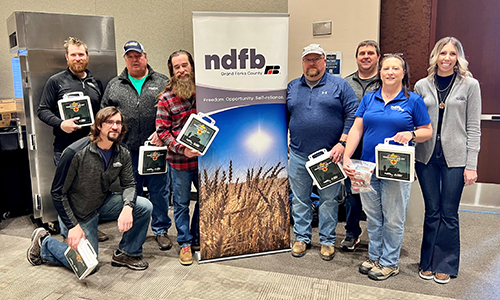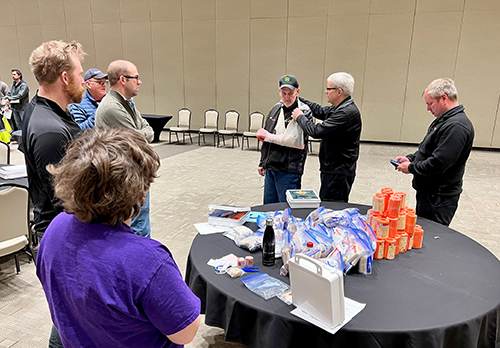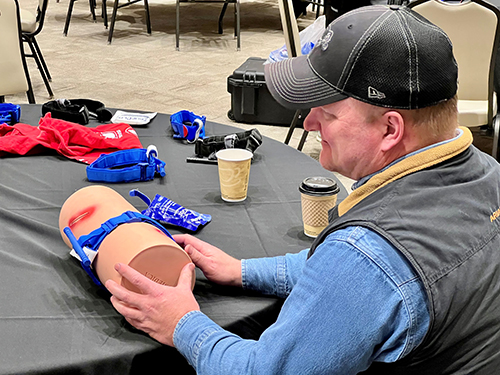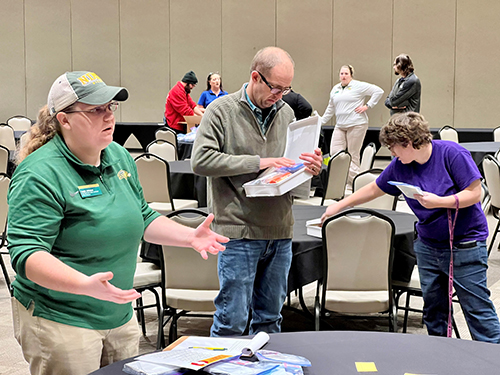February 23, 2023
County Farm Bureau involved in farm safety pilot program
Topic: Education
Farmers and ranchers attending the International Crop Expo in Grand Forks had the opportunity to build a farm first-aid kit.
Injuries that take place on a farm or ranch can be unique, requiring immediate care. A farm first-aid kit provides the tools to help an injured victim until help arrives. Workshop participants learned how to use the items in the first-aid kit in case of a serious injury. The first-aid kit can then be placed in a tractor, shop, or barn where it can easily be found in a time of need.
The workshop stemmed from a pilot program developed by Katelyn Landeis and Angie Johnson of North Dakota State University Extension. Grand Forks County Farm Bureau was actively involved with the pilot program, providing their time and financial support.
“Grand Forks County Farm Bureau has been a great sponsor of this program, as they provided the support to develop 50 farm first-aid kits for the workshop,” said Landeis. “They see the value of working together with farmers on education and awareness; not only about what is in a first aid kit, but also how to use those items to respond to a traumatic injury on the farm.”

Grand Forks County Farm Bureau board members at the workshop were from left: Evan Montgomery, Brandon Drees, Larry Nord, Andrew Galegher, John Schumacher, Troy Uglem, Jennifer Fichtner and NDFB staff member Megan Overby.

An Altru paramedic demonstrates how to splint an injured arm.

During the workshop, a farmer learns how to properly apply a tourniquet to stop bleeding.
The workshop was led by personnel from NDSU Extension, Sanford Health, and Altru Health System. Topics covered included:
• How to use a tourniquet to stop the bleed
• Handling amputated body parts
• Treating burns on the farm
• Slips, trips, and falls; how to use a splint

Angie Johnson, NDSU Extension farm and ranch safety coordinator, explains how to handle amputated body parts.
“We hope by crafting their own first-aid kit, farmers and ranchers now have the resources to response to an injury, as well as the education and confidence to potentially save someone’s life,” said Johnson.
